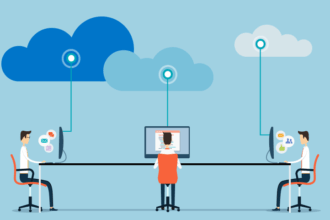 That’s a big question! Back in 2006, we started the discussion on Data Mining Research, with the post about the book Java Data Mining. We were fortunate to get opinions from experts and one of the book’s authors.
That’s a big question! Back in 2006, we started the discussion on Data Mining Research, with the post about the book Java Data Mining. We were fortunate to get opinions from experts and one of the book’s authors.
 That’s a big question! Back in 2006, we started the discussion on Data Mining Research, with the post about the book Java Data Mining. We were fortunate to get opinions from experts and one of the book’s authors. In 2010, we continued the discussion about specific aspects of data mining which could be automated.
That’s a big question! Back in 2006, we started the discussion on Data Mining Research, with the post about the book Java Data Mining. We were fortunate to get opinions from experts and one of the book’s authors. In 2010, we continued the discussion about specific aspects of data mining which could be automated.
Recently, I re-launched the debate on the Swiss Association for Analytics. However, I think it is worth a dedicated blog post. In order to answer this big question, we need to analyze the different phases of data mining and estimate which one can be automated. For this purpose, I have chosen the CRISP-DM methodology (I guess any other data mining process would lead to similar conclusions).
Business understanding
In this critical step, we transform a business problem into a data mining one. We need to understand what should be solved and why. Answers will lead to the following steps. It is clear that this step cannot be automated for a new project. The data miner has to interact with experts to define the data mining problem to solve.
Data understanding
This step consist in understanding the data, the way they have been collected, their particularities, etc. Again, the data miner works in collaboration with field experts to derive knowledge useful for preparing the data (next step). This is a manual task that cannot be automated.
Data preparation
In this step, we transform raw data into meaningful information to mine. An example is outlier detection (and removal). Some companies argue that their tools can automate this step. This is true to a certain extent, but there are limitations. Here is a simple example: what is the threshold for the variable “age” to be an outlier? 100, 110, 150 years old? This is problem dependent. The same issue happens for missing values. Detecting them is often straightforward, but deciding on the action to take needs manual intervention.
Another important aspect of data preparation is feature selection and extraction. While selection can be automated, extraction (through aggregation) needs understanding of the data. Finally, any data mining tool can automate the target variable detection. However, the final choice is left to the data miner, who knows the business problem to solve.
Modeling
This step is where we apply modeling algorithms to processed data. Among others, it involves selecting a data mining algorithm and tuning its parameters. This is certainly the task that can be the most easily automated. Some vendors claim that their tools can automate the model building process. The concept of testing several algorithms with different sets of parameters (tuning) can be automated to a certain extent. However, it supposes that there are enough data, that the choice of the algorithm is not business dependent (which is usually not the case) and that the evaluation criterion is known (see below).
Cross Industry Standard Process for Data Mining (CRISP-DM)
Evaluation
In order to validate our data mining results, we need evaluation criteria. Although applying a criterion can be automated and different modeling algorithm can be compared, the choice of the criterion may be business dependent. In the case of forecasting, for example, different evaluation criteria exist such as Root Mean Square Error (RMSE), Mean Absolute Error (MAE) and Mean Absolute Scaled Error (MASE). If we compare different forecasting algorithms on the same time series, we can use RMSE. If the goal is to compare different time series, MASE is more appropriate. This is business dependent and thus difficult to automate.
Deployment
In this phase, the goal is to transform our proof of concept or prototype into an industrialized solution. This step involves transforming our “one shot” project into a solution that can work with as few manual interventions as possible. Although standards such as Predictive Model Markup Language (PMML) are appearing, this step stills requires manual intervention. Questions such as where and how to integrate our data mining process within an overall solution/tool need to be explored.
As a conclusion, we have seen that most data mining steps from the CRISP-DM methodology cannot be automated and need manual intervention. Data preparation and modeling, to a certain extent, could be automated. However, as data mining professionals know, most of the effort in a data mining project concerns business and data understanding. Here is an excellent metaphor from Berry and Linoff (re-explained by David S. Coppock):
“The camera can relieve the photographer from having to set the shutter speed, aperture and other settings every time a picture is taken. This makes the process easier for expert photographers and makes better photography accessible to people who are not experts. But this is still automating only a small part of the process of producing a photograph. Choosing the subject, perspective and lighting, getting to the right place at the right time, printing and mounting, and many other aspects are all important in producing a good photograph.”
What about you? Do you think we can automate data mining?










